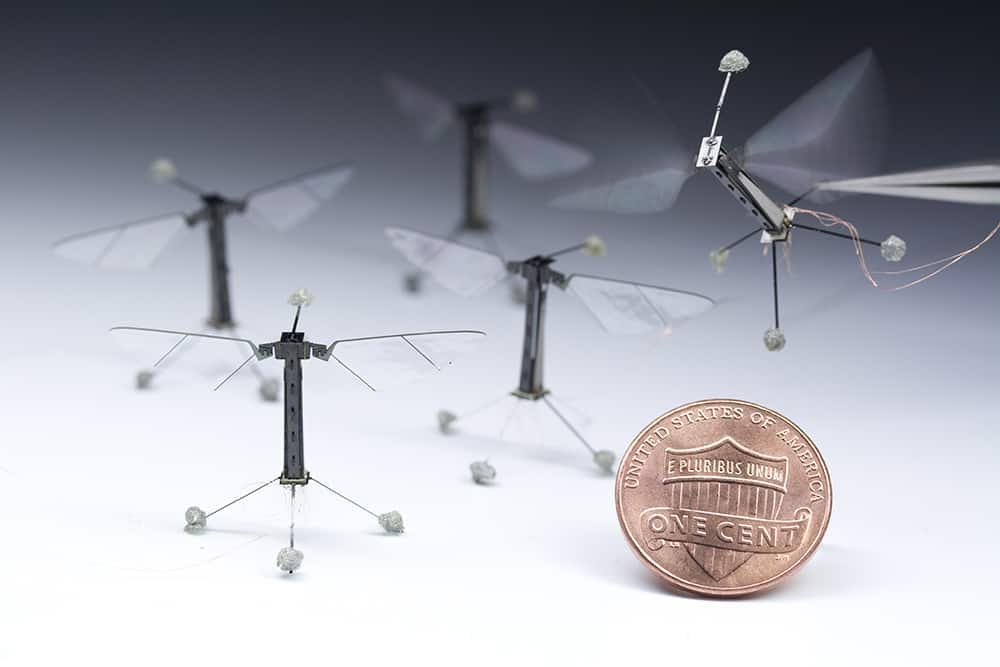
Following the news that the honeybee is now officially an endangered species as “colony collapse disorder” accelerates, it seems that a Harvard research team has the solution – robotic honeybees. Instead of attempting to save the bees by reducing the use of pesticides or revising safety standards for cell phone radiation, the focus has shifted to replacing the bees altogether. Harvard University researchers, led by engineering professor Robert Wood have been tweaking “RoboBees” since their initial introduction in 2009. The bee-sized robots made of titanium and plastic represent a breakthrough in the field of micro-aerial vehicles. The size of the components needed to create flying robots were previously too heavy to make a such a small structure lightweight enough to achieve flight. Current models weigh only 80 mg and have been fitted with sensors that detect light and wind velocity.
Researchers claim that the bees could artificially pollinate entire fields of crops and will soon be able to be programmed to live in an artificial hive, coordinate algorithms and communicate among themselves about methods of pollination and the locations of particular crops. In addition, RoboBees have been suggested for other uses including searching disaster sites for survivors, monitoring traffic, and “military and police applications.” These applications could include using RoboBees to “scout for insurgents” on battlefields abroad or allowing police and SWAT teams to use the micro-robots to gather footage inside buildings.
The RoboBees project originally began at the University of California at Berkeley in 1998 when neurobiologist Michael Dickinson, electrical engineer Ron Fearing, and then-grad student Rob Wood received a $2.5 million grant from DARPA to create an insect drone. Dickinson now continues his work at the University of Washington while Wood heads the principal RoboBee micro-robotics lab at Harvard. DARPA, the Defense Advanced Research Projects Agency of the US military, is best known for its role in helping create the internet, but a vast majority of their taxpayer-funded projects paint a decidedly dystopian picture of humanity’s future. Most of DARPA’s projects involve transhumanism, the merging of humans and machines to create a technologically governed populace.
One of the most well-known DARPA projects is the creation of “super soldiers” that are cybernetically-enhanced both physically and mentally, including brain implants that could allow the super-soldiers to “communicate by thought alone.” Some defense scientists have warned it could lead to the “remote guidance or control of a human being.”
Other dystopian DARPA projects include robots that can run as fast as cheetahs, grasp objects, and kill targets. It should come as no surprise, then, that DARPA also seeks to create robotic wildlife that will fulfill essential roles to planetary function as well as other uses in maintaining a surveillance state. However, there is no way DARPA or technology can fill the void of highly complex natural organisms and natural systems with machines, no matter how many millions of dollars of taxpayer money they spend. The war against nature and their planned technological replacements may suggest that the decline of bees and biodiversity may actually be a means to an end for those who seek to create a transhumanist future.
What are your thoughts? Please comment below and share this news!
This article (Project Originally Funded By DARPA Seeks To Replace Bees With Tiny, Winged Robots) is free and open source. You have permission to republish this article under a Creative Commons license with attribution to the author and TrueActivist.com


